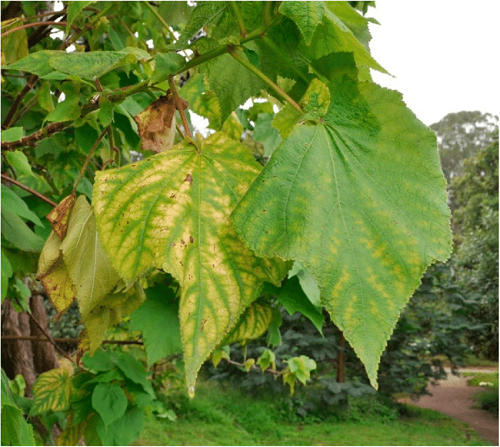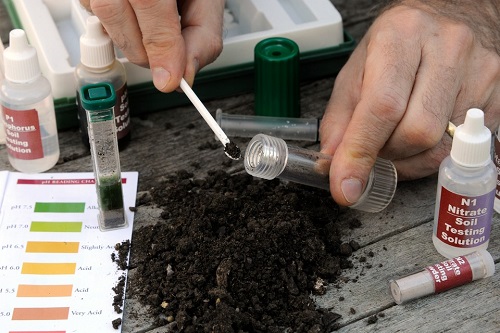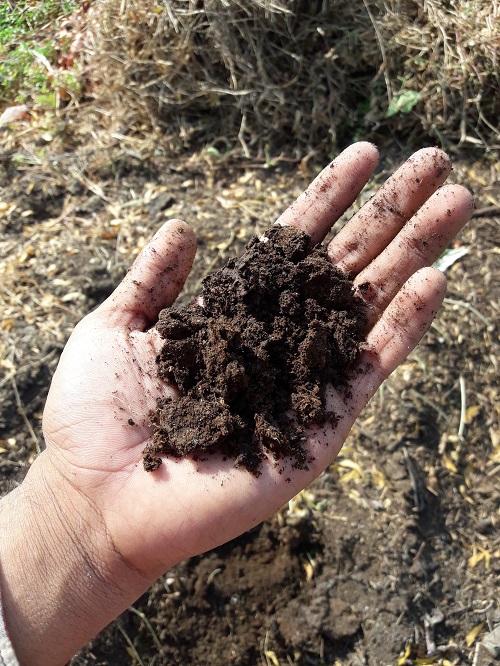Iron Deficiency in Plants can cause severe damage in the long run, causing death. Here are the best tips on how to avoid it!
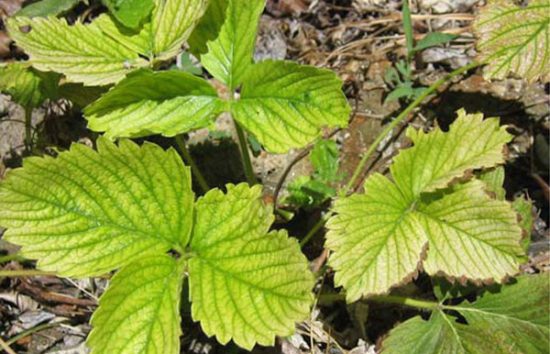
If your green friends are looking a little lackluster, sporting yellow leaves, and failing to thrive, you may be dealing with more than just a lack of water or sunlight. Iron Deficiency in Plants is a common yet often overlooked issue that can significantly affect their health, appearance, and yield. Read on to know the causes, symptoms, and, most importantly, solutions to this gardening dilemma.
Find how rusty nails can save dying plants
Iron Deficiency in Plants
Iron is an essential micronutrient for plants. It plays a crucial role in various physiological processes, such as photosynthesis and respiration. When plants lack sufficient iron, they can exhibit signs of distress and reduced vitality. Understanding the causes and symptoms of iron deficiency is essential for maintaining a thriving garden.
Explore potassium deficiency symptoms in this post
Causes of Iron Deficiency in Plants
1. Poor Soil Conditions
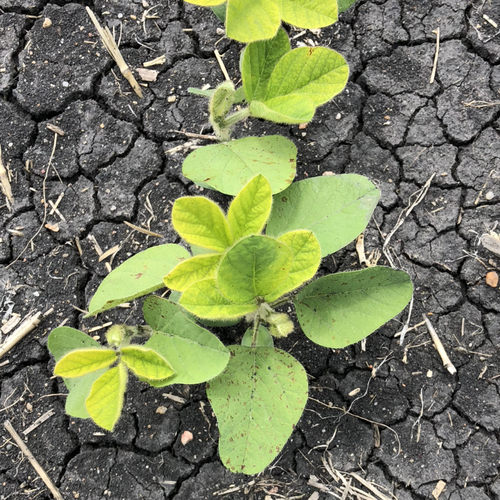
In alkaline soils with a pH above 7.0, iron tends to become less soluble and, therefore, less accessible to plant roots. This happens because iron forms insoluble compounds at higher pH levels that plants cannot readily absorb.
Conversely, in acidic soils with a pH below 6.0, iron toxicity can occur, as excessive iron may become available but in a form that is toxic to the plant. Thus, maintaining the right pH balance is crucial for iron uptake.
2. Excessive Moisture
Waterlogged or poorly drained soils can severely limit a plant’s ability to absorb iron.
When soil is waterlogged, it creates conditions that reduce oxygen levels in the root zone. Under low-oxygen conditions, iron becomes less available for uptake, even if it’s present in the soil.
Adequate drainage and soil aeration are essential to prevent waterlogging and ensure plants can access the iron they need.
30 Moisture Loving Plants for Soggy & Wet Soil
3. High Phosphorus Levels
High phosphorus levels in the soil can interfere with the plant’s ability to take up iron. This is because phosphorus and iron can form chemical bonds in the soil that prevent iron from being absorbed by plant roots.
Maintaining an appropriate phosphorus-to-iron ratio is essential to ensure that iron remains accessible to the plant.
4. Competition with Other Nutrients
Nutrient imbalances, particularly the overabundance of certain elements like manganese, can compete with iron for uptake by plant roots.
When other nutrients are in excess, they may outcompete iron for binding sites on root surfaces, making it difficult for the plant to absorb adequate iron.
Achieving a balanced nutrient profile in the soil is critical to avoid nutrient competition and promote healthy iron uptake.
Read the nitrogen deficiency in plants here
Symptoms of Iron Deficiency in Plants
1. Interveinal Chlorosis
The most characteristic symptom of iron deficiency is interveinal chlorosis, where the young leaves of the plant turn yellow while the veins remain green.
This yellowing occurs between the veins and gives the leaves a distinctive appearance. Interveinal chlorosis indicates that the plant cannot produce sufficient chlorophyll, which is essential for photosynthesis.
2. Stunted Growth
Iron deficiency can lead to stunted growth in plants. When a plant lacks the iron it needs, it struggles to carry out essential metabolic processes, resulting in reduced growth.
Affected plants often have smaller leaves, shorter stems, and fewer branches.
10 Tips to Follow Before Bringing Your Houseplants Indoors in Fall
3. Leaf Discoloration

In severe cases of iron deficiency, leaves can display more extreme discoloration. Instead of the typical yellowing, leaves may turn brown or white. Occasionally, leaf edges can become scorched or appear burnt, further compromising the plant’s health and aesthetic appeal.
4. Reduced Flower and Fruit Production
Iron deficiency can also impact a plant’s reproductive capabilities. Plants may produce fewer flowers, and the quality of the blooms may be compromised. Additionally, the production of fruits may be limited, resulting in lower yields for fruit-bearing plants.
5. General Weakness and Vulnerability
Iron-deficient plants are generally weaker and more susceptible to environmental stressors, diseases, and pests. They lack the necessary iron to build strong cell walls and maintain their overall vigor, making them more vulnerable to various challenges.
How to Keep Houseplants Alive in Winters | Indoor Plants Winter Care Tips
6. Leaf Drop
In severe and prolonged cases of iron deficiency, plants may shed their affected leaves as a survival mechanism. This is a last resort to conserve resources and direct what little iron is available to more critical parts of the plant.
7. Thinning Canopy (Less Bushy Plant)
As iron deficiency progresses, the plant’s canopy may become sparse, with reduced foliage and an overall weakened appearance. This not only affects the plant’s aesthetic appeal but also its ability to capture sunlight for photosynthesis.
Discover plant deficiency symptoms here
Solutions to Combat Iron Deficiency in Plants
1. Soil Testing
Begin by conducting a soil test to assess the pH and nutrient levels in your soil. This will help you determine whether your soil is indeed deficient in iron or if other issues are causing the symptoms.
If your soil is too alkaline (high pH), which often leads to reduced iron availability, consider amending it with materials that lower pH, such as elemental sulfur, aluminum sulfate, or acidifying fertilizers.
This process is known as soil acidification and helps create a more favorable environment for iron uptake by plant roots.
How to Check Your Soil pH at Home
2. Iron Chelates
Iron chelates are soluble forms of iron that plants can readily absorb. They are available in various forms, such as ferrous sulfate, ferric EDTA, or ferrous gluconate.
You can apply iron chelates as foliar sprays or directly to the soil around the base of the plants. Foliar sprays are particularly useful when a quick response is needed.
3. Organic Matter
Improve the overall health and structure of your soil by incorporating organic matter like compost. It enhances soil aeration, water-holding capacity, and microbial activity – all contributing to better plant iron uptake.
4. Proper Watering
Ensure that your plants are not subjected to waterlogged conditions. Adequate drainage is essential to prevent iron deficiency. Good soil drainage prevents water from accumulating around the root zone, which can limit oxygen availability and hinder iron absorption.
How To Water Plants + 5 Watering Mistakes You’re Doing
5. Balanced Fertilization
Avoid over-application of high-phosphorus fertilizers, as excessive phosphorus can interfere with iron absorption. Using balanced fertilizers that contain a variety of essential nutrients in appropriate proportions can help prevent nutrient imbalances.
6. Mulching
Apply organic mulch, such as wood chips or straw, to the soil surface. Mulch helps maintain consistent soil moisture levels, prevents rapid drying of the soil, and reduces the risk of waterlogging, all of which can contribute to better iron uptake.
7. Iron-Rich Amendments
If the soil is severely iron-deficient, consider amending it with iron-rich materials like iron sulfate, phosphate, or greensand. These amendments slowly release iron into the soil, providing a long-term solution.
Cheap Tips and Tricks to Cure Iron Deficiency in Plants
1. Coffee Grounds
- How to Use: Sprinkle used coffee grounds around the base of the plant.
- Why It Works: Coffee grounds are rich in iron and other nutrients, making them an effective natural fertilizer.
Which Plants Like and Do Not Like Coffee Grounds
2. Epsom Salt
- How to Use: Dissolve one tablespoon of Epsom salt in a gallon of water. Use it to water the plants.
- Why It Works: While Epsom salt is generally used to provide magnesium, it also contains trace amounts of iron beneficial for plant health.
3. Iron Nails
- How to Use: Place 15-18 iron nails in the soil near the plant’s roots, but not touching them.
- Why It Works: The iron from the nails will slowly leach into the soil, helping to boost iron levels over time.
4. Eggshells
- How to Use: Crush eggshells and sprinkle them around the base of the plant.
- Why It Works: Besides being a good source of calcium, eggshells also have trace amounts of iron that can benefit your plants.
23 Plants that Don’t like Eggshells
Plants Commonly Affected by Iron Deficiency
Fruiting Plants
- Citrus Trees: Such as lemon, lime, and orange trees.
- Tomato Plants: Especially those grown in high pH soil.
- Strawberries: Especially in hydroponic setups.
Leafy Vegetables
- Spinach: Tends to develop yellow leaves when deficient.
- Lettuce: Shows symptoms mainly in young leaves.
- Kale: Older leaves turn yellow, affecting the overall health.
8 Fast Growing Leafy Green Vegetables You Can Harvest in Just 15 Days
Ornamental Plants
- Azaleas: Known for showing yellowing between leaf veins.
- Gardenias: Especially susceptible in alkaline soils.
- Rhododendrons: Leaves develop a lighter color with dark green veins.
Indoor Plants
- Spider Plant: Yellowing of leaves, especially the tips.
- Peace Lily: Older leaves can become yellow.
- Snake Plant: Shows a decline in vibrant green color.
Grasses and Turfs
- Bermuda Grass: Turns yellow in patches.
- Kentucky Bluegrass: Less vibrant and can show stunted growth.
- Zoysia Grass: Susceptible in high pH and sandy soils.
11 Best Indoor Grass Plants You Can Grow As Houseplants
Herbs
- Basil: New leaves appear yellow or discolored.
- Mint: Older leaves can yellow and weaken.
- Rosemary: Tip burn and yellowing of younger leaves.


